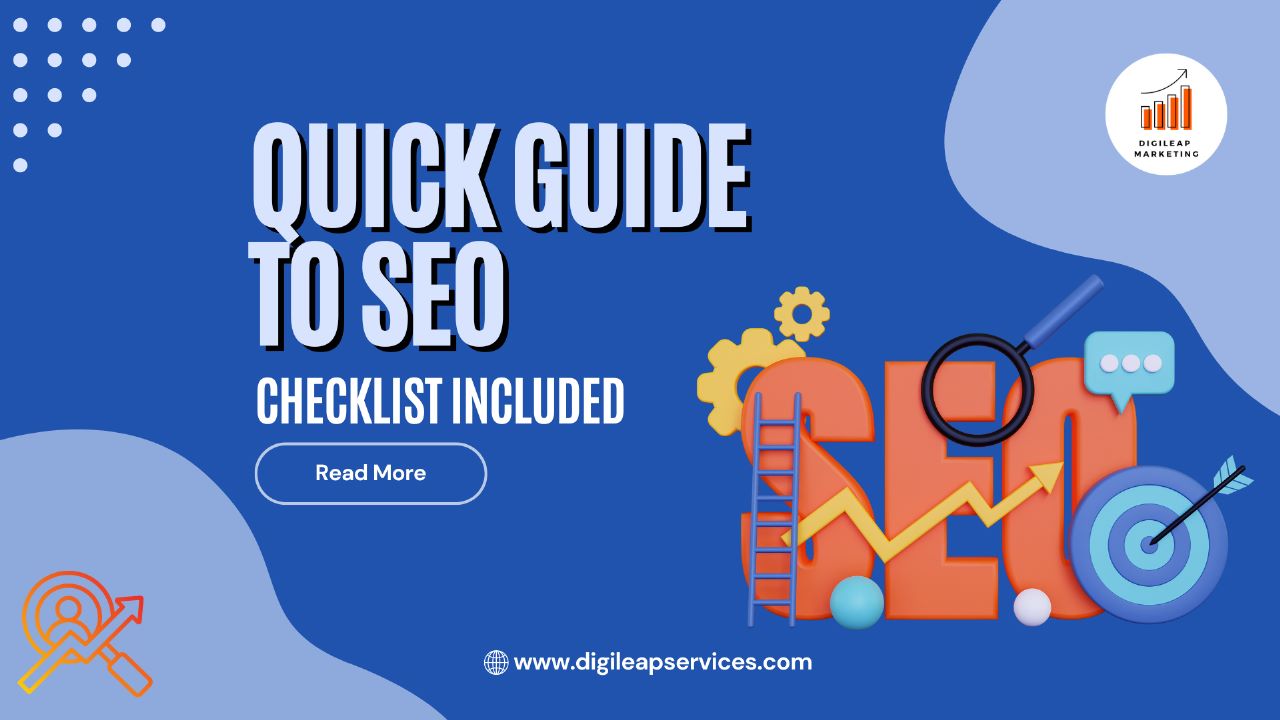Quick Guide to SEO (Checklist included)
To assist you in increasing your site’s organic traffic and improving your ranks, we have put up the ultimate SEO checklist.
SEO Basics Checklist
- Install Bing Webmaster Tools and Google Search Console
In order to track, maintain, and debug your site’s performance in Google search results, you can use Google Search Console (GSC). It’s among the best resources for learning more about how Google views your website. the efficiency of Google Search Console is to discover how to create your account and utilize all of its features, a comprehensive GSC guide. On the other hand, the comparable platform is Bing Webmaster Tools. if only Bing had existed. You may spot crawl issues with both of these tools, as well as check what keywords people are using to locate your website.
- Setting up Google Analytics
The site (and app) analytics tool Google Analytics is free. It assists in monitoring and reporting the volume, origin, and activity of your users’ traffic.
Its beneficial attributes include:
Discover which of your website’s pages receives the greatest (or the least) visitors. Search engines and other websites that send you traffic should be identified. Keep tabs on your site’s average bounce rate, page views, and time spent on it. To get the most out of your Google Analytics account, read our article on how to set it up.
- Install and Configure an SEO Plugin (If You’re Using WordPress)
Installing and configuring an SEO plugin is recommended if you use WordPress. It will make optimizing your website for search engines really simple. And assist you with technical SEO tasks like putting robots.txt and XML sitemaps in place. The most well-liked choices include:
- Yoast
- Semrush SEO Writing Assistant
- Rank Math
- Create and Submit a Sitemap
A sitemap is a file that enables search engines to easily discover, crawl, and index all of the material on your website. It highlights the sites and files you believe to be crucial and offers helpful details about them. The sitemap will be generated automatically if you’re using WordPress. If not, using a sitemap generator tool will make constructing one rather simple. When you’ve finished creating your sitemap, upload it to both Bing and Google Search Console.
- Establish a Robots.txt File
Search engines can be instructed in a file called Robots.txt which pages and files they should or shouldn’t crawl. And they are really significant. They organize how web crawlers visit, index, and display your site’s information to searchers. By appending /robots.txt to the end of the URL for your homepage, you may view your robots.txt file.
- Check Manual Actions in Search Console
Manual actions are brought about by a blatant attempt to influence or break the Google Webmaster Guidelines. Additionally, if your website requires manual intervention, some or all of it won’t show up in Google search results. User-generated spam, structural data problems, artificial links (both to and from your site), thin content, hidden language, and other manual acts are examples.
- Be Certain Google Can Index Your Website
Making sure that Google can index your website is part of knowing the fundamentals of SEO. A page’s ability to be examined and added to a search engine’s index is referred to as indexability. so that it could appear in search results.
Checklist for Keyword Research
Finding potential search terms that could be pertinent to your business and your clients is the process of conducting keyword research. Finding, grouping, and setting priorities for keywords are all part of it. thereby feeding your keyword strategy.
- Identify Your Competition
Identifying rival keywords is one of the best methods to begin a keyword research project. Your rivals are now focusing on these keywords to raise their rankings and increase traffic. If those terms are effective for them, then they might also be effective for you.
- Choose Your Main Keywords
The keywords that are most likely to result in leads, sales, and conversions are your core “money” keywords. These are typically high-volume, tough-to-rank keywords that describe what you provide.
- Search for Long-Tail Keyword Variations
A long-tail keyword is a focused search term with a small number of searches. Users don’t look for them as frequently. They do, however, account for a sizable portion of all searches and have greater conversion rates. They are typically simpler to rank for as well.
- Establish a Keyword Map
Once your target keywords have been determined, you must “map” (assign) them to the various sections of your website. When attempting to identify a larger set, start by using one keyword.
- Analyze the Intent of Pages That Rank
The purpose of a user’s search is known as search intent.
Navigation: Looking for something.
Informational: An effort to gain additional knowledge about something.
Transactional: Try to carry out a particular action.
Commercial: Seeking more information prior to making a purchasing choice.
A primary objective of Google is to match consumers’ search intent.
You can more effectively respond to the inquiries of your audience by being aware of their concerns.
Therefore, you should always check that the content of your page corresponds to the intent of the searcher using the phrase you’re targeting.
- Understand Your Ranking Difficulty
Prioritizing jobs is made easier when you evaluate your odds of ranking for a particular term. As you start your SEO campaign, also establish expectations. Consider both keyword difficulty and search volume when you decide what to target.
Checklist for Off-Page SEO and Link Building
Off-page SEO cannot be ignored if you want to promote SEO success.
- Analyze the Link Profiles of Your Competitors
How can you outrank your rivals if you don’t know what their backlink profiles look like? You should thoroughly examine your competitors’ link profiles in addition to their content, which is crucial to do.
- Analyze the Links Between the Links
To uncover websites linking to your rivals but not to you, you may also carry out a backlink gap analysis. Why? They will probably be pleased to connect with you if they are linking to one of your rivals. If your content is better, this is especially true.
- Creating Links From Unlinked Mentions
When a website talks about you or your company but doesn’t link to you, that is referred to as an unlinked mention. Due to the fact that they have already mentioned you, this method is really effective. Most likely, they’ll be content to make it into a link. Reach out to the page’s owner or author and respectfully ask for a backlink for each unlinked mention you come across.
- Find New Opportunities for Link Building
Opportunities for link development are always emerging. Building a backlink profile of excellent quality is crucial. Additionally, discovering these changes can be made a little bit simpler by employing the appropriate SEO tools.
- Create and Improve Your Google Business Profile
If you own a local company, confirm that it has a Google Business Profile (formerly known as Google My Business). Google Search and Google Maps are two of the best ways to contact customers. And now for some advice on business profiles:
- As accurately as you can, reflect your business.
- Describe the distinctive qualities of your company.
- Upload and update pictures and videos.
SEO is a dynamic field. As a result, compiling a comprehensive checklist of SEO requirements is practically impossible.
On the other hand, if you focus on all of the above, you’ll be well on your way to higher ranks. Furthermore, you are far ahead of competitors.












